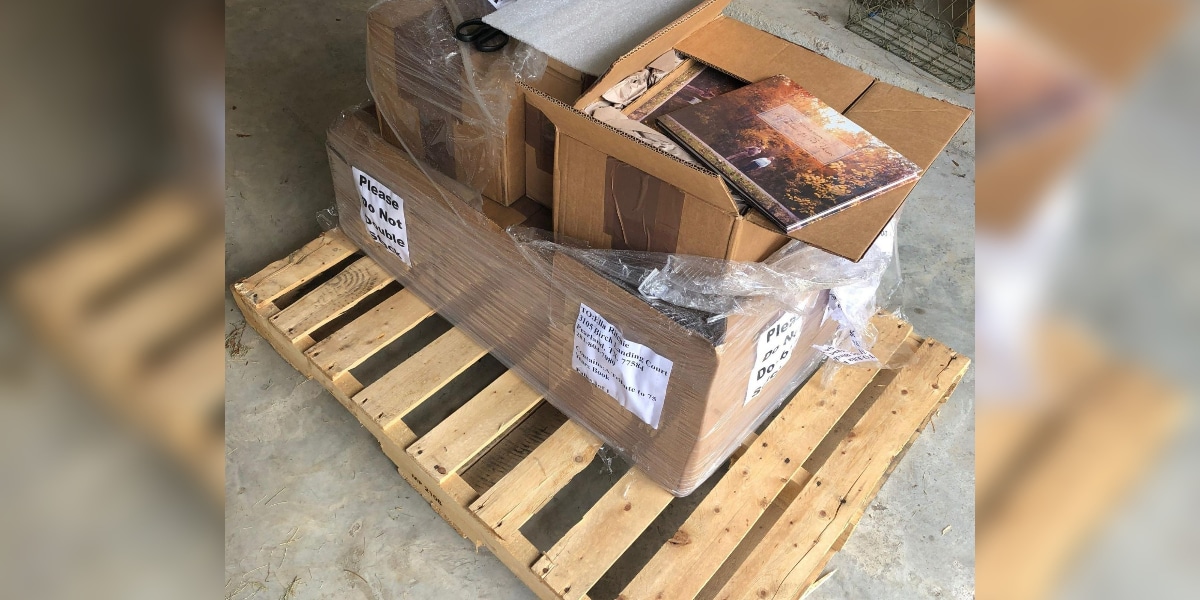Image Commercially Licensed from: DepositPhotos
By Ella Ritchie
I thought I knew everything about book publishing for families. That is, until I published a legacy book in honor of my grandparents.
As a nonfiction publisher for self-publishing authors, I help people produce their autobiographies, memoirs, and family history books. So, I already knew a book is a beautiful way to honor a family’s legacy. It captures all of the people, stories, and images that matter. It’s a perfect gift for future generations.
What I did not fully understand are the deep emotions that come with a family project. I walk with clients every day through the highs and lows of the process, but it was humbling to experience my own business process. Switching from “publisher” to “author” provided a whole new perspective – and gave me a new appreciation for legacy books.
Are you considering embarking on a book for your family?
Here’s the five-step process to producing your family legacy book.
Step 1: Materials Development
The first step is developing your materials. Your materials include both your written content and images.
There’s a lot to do. There’s writing, editing, and proofreading. There may be questions to write, interviews to schedule, photographs to collect, and people to coordinate.
And when you do gather what you need, it’s a challenge to know what to do with it all. The stories need to be cobbled together, and the photographs must meet printing standards.
I encourage the help of a publisher, ghostwriter, or book coach. They’ll help you define a clear vision for your book. For example, what kind of book do you want? Do you need it by a specific date? With a clear vision, your publisher can help you form a realistic plan based on your goals.
In my case, I was aiming for a big event. In 10 months, my grandparents would be celebrating their 75th wedding anniversary. The entire family – a huge Cajun family – would be gathering for the special occasion. I couldn’t think of a better way to honor my family than to publish a book honoring my grandparents.
My deadline determined the type of book I could produce. I knew I wouldn’t have time for a comprehensive family history in 10 months. So, I settled on a coffee-table book. Short stories with photographs were more manageable in the time available.
With my goals in place, I got to work.
Step 2: Graphic Design
The second step is about the visual elements of a book. Book design captures the beauty of your legacy through aspects like layout, typography, and cover design.
This step is the most fun. After working hard on developing your materials, it’s exciting to watch your words come to life in the hands of a capable designer.
Take your time in preparing for your book design. You can start with your resources and provide high-quality scans of your photographs, documents, and newspaper clippings.
Many authors turn to other free and paid resources. Wikimedia Commons is a free online database of media files in the public domain, a great place to find historical images. Or you can pay for high-resolution images at stock photography websites like DepositPhotos. Library collections are also great places to find images.
Some authors feature family trees. They use genealogy sites to trace their lineages within the pages of their books.
When it all comes together, that’s when design magic happens.
Step 3: Printing
Printing is the process of finally getting your materials into book form. It involves details like paper type, binding, trim size, and cover finish.
This step can be the most emotional. The first time I held my family history coffee-table book, I sank to the floor and cried in joy and relief. It’s an indescribable feeling to see your project come to fruition.

There are two types of printers: offset printing and printing on demand. Each accomplishes a different purpose:
An offset printer is great for quality. It’s a custom process that offers unlimited creative options. You can choose from an exciting array of book sizes, paper stocks, bindings, and finishing touches. After feeling the silky 100# paper, one client called it the “Cadillac” of printers. It’s best for large print runs or luxe coffee-table books. This is the printer I used for my family history coffee-table book.
An on-demand printer is great because it’s truly “on demand.” It allows you to order copies as needed, whether one or 1,000. The quality and creative options fall short of an offset printer – for example, the automated process restricts paper quality and limits trim sizes. However, the ability to print any number of books with no upfront cost has transformed the publishing industry. This type of printer is best for self-published authors who want to make it easy for family and friends to access their books online.
Some authors use both types of printers.
For example, we used an offset printer for John R. Gammino’s autobiographical love story, The Love We Knew. He wanted an elegant keepsake for his inner circle of family and friends. We also used an on-demand printer. He wanted an affordable way to produce his book so that a wider audience could benefit from his story of unconditional love and lasting resilience.
The best printer for your book depends on your specific goals.
Step 4: Distribution
This step is about getting your book into the hands of family, friends, or a wider audience. It enables worldwide access.
Book distribution is a complex system that involves distributors, retailers, ISBNs, metadata, and pricing. It may involve marketing copy, copyright registration, and library cataloging data. You can fulfill orders globally without inventory and without lifting a finger.
Distribution is optional. Some authors want to publish one set of books and gift copies to their family and friends. That’s what I did for my family coffee-table book.
Some authors prefer to make their books available online for family and friends who live far away or for a wider audience. In that case, distribution makes it easy for others to find and purchase your book. You don’t have to fuss with shipping because retailers like Amazon handle it for you.
Step 5: Marketing & Public Relations
This step is about the activities it takes to promote books. It involves strategy, planning, and implementing book marketing and PR efforts. Marketing is optional for legacy books.
Many authors of legacy books are content celebrating with their inner circle. It was my joy to unveil the coffee-table tribute to my family and grandparents at their wedding anniversary party.
Some authors want their stories to impact a wider audience, in which case promoting your book begins with your manuscript and takes steady effort over the lifetime of your book. Making a dent takes a consistent, coordinated approach.
You might invest in your learning or enlist the help of a book marketing team. Either way, promoting books begins with identifying the universal themes of your legacy book and understanding the book marketing landscape. You can identify the possibilities and map a clear action plan.
A book marketing and PR plan coordinates all aspects of book promotion. First, set your foundation by defining your marketing goals and market, and then identify and reach out to your circle of influence. Next, prepare your online presence and navigate online and traditional media. Finally, implement ongoing activities to keep the momentum.
Conclusion
Book publishing is an exciting, rewarding journey. With a trustworthy guide, you can navigate the five steps of the book publishing process: Materials Development, Graphic Design, Printing, Distribution, and Marketing & PR.
Today, when I reflect on everything that went into publishing my family legacy book, I think of the late nights and endless scanning of photos. The initial excitement and the growing concern about time. Every big and small decision that went into the design.
And I smile. It was worth every minute.


Ella Ritchie is the founder of Stellar Communications Houston, a nonfiction book publishing, certified marketing, and author PR team for self-publishing authors, businesses, nonprofits, and families. Publish your legacy book at stellarwriter.com.

















